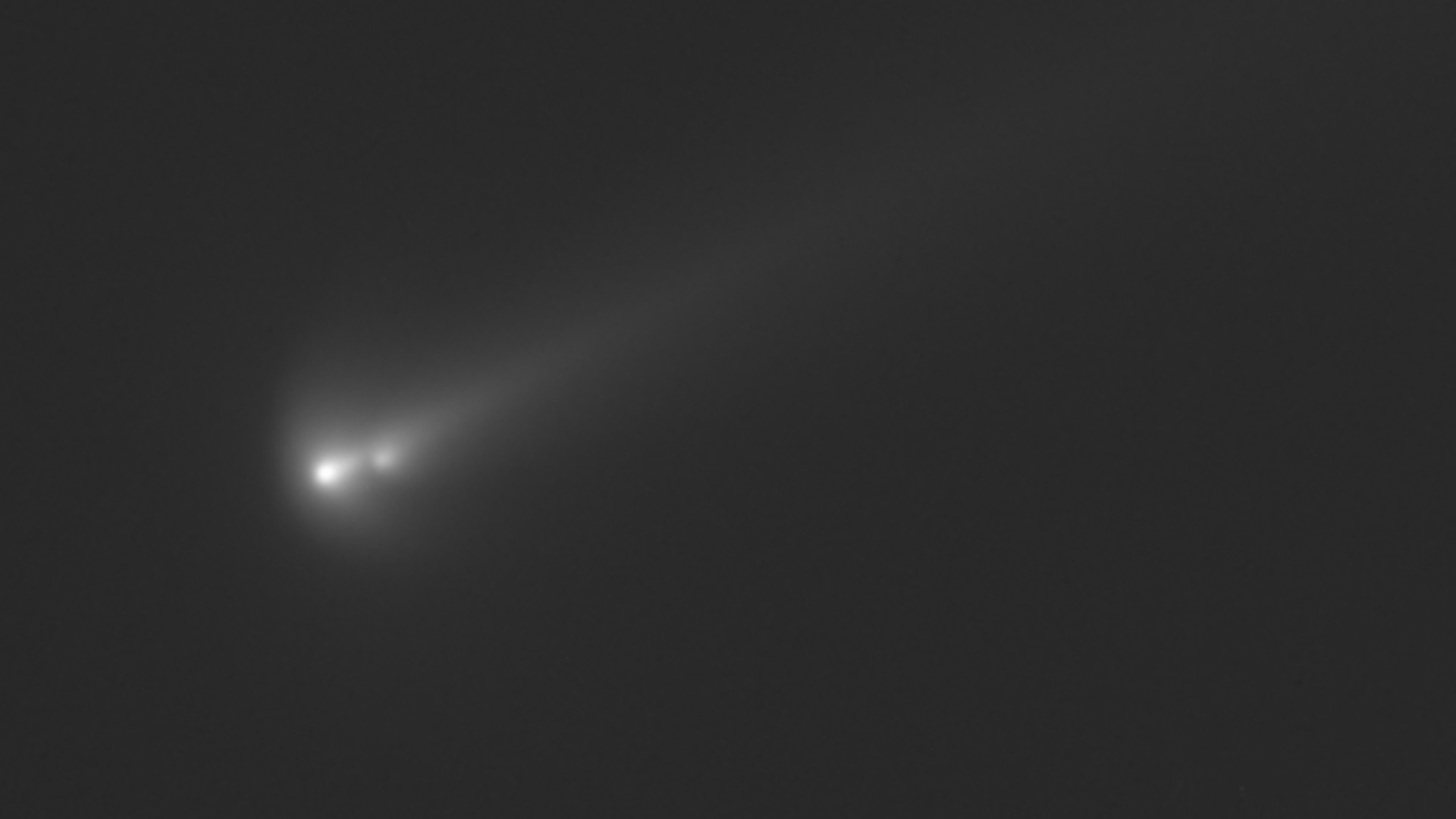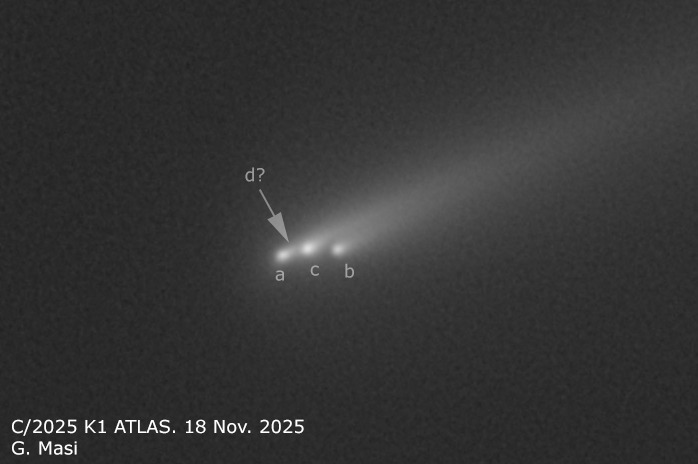Comet C/2025 K1 (ATLAS) breaks apart in incredible telescope photos
The images show the comet's core breaking apart into three or possibly four fragments.

A comet discovered earlier this year continues to break apart after its close brush with the sun this month.
Astronomer Gianluca Masi of the Virtual Telescope Project captured breathtaking imagery of solar system comet C/2025 K1 (ATLAS) as its central icy core, or nucleus, appears to have broken into multiple pieces after being warmed by the sun. The comet made its closest approach to the sun on Oct. 8, and astronomers captured images following the solar flyby that appear to show it dramatically breaking apart.
These most recent images seem to confirm that, as multiple distinct fragments can be seen. The images appear to show "three fragments of the original nucleus and possibly a fourth one," Masi wrote in a statement accompanying the images.
Masi captured the images over the past week using a Celestron C14 Schmidt-Cassegrain telescope on a Paramount ME robotic mount, with a SBIG ST-10XME CCD self-guiding camera. The images consist of seven different 60-second exposures captured without any filters.

He made those exposures on five separate nights between Nov. 11 and 18 Nov. 18, and stacked them together to make an animation that depicts the motion of the fragments relative to one another:

Based on one of the images, Masi suspects the comet may have actually broken into a fourth fragment.

Astronomers at the Asiago Observatory in Italy captured the comet on Nov. 11 with the 1.82-meter Copernicus telescope, which appeared to reveal that, at that point, the comet had broken into two distinct fragments separated by about 1,200 miles (2,000 kilometers).
Breaking space news, the latest updates on rocket launches, skywatching events and more!
But even then, astronomers suspected "the presence of a third, smaller and fainter fragment to the left of the pair," Mazzotta Epifani wrote in a statement published to the Italian National Institute for Astrophysics website (translation by Google).

Like many comets, C/2025 K1 (ATLAS) is believed to have come from the Oort cloud, a distant spherical bubble of small icy bodies that surrounds our solar system at the farthest reaches of our sun's neighborhood. Many long-period comets (those that only rarely pass through the inner solar system) originate from the Oort cloud, which is thought to contain billions of small icy objects like comets (though some Oort cloud bodies are so large they qualify as dwarf planets).
Want to see these visitors from the outer solar system for yourself? Skywatchers hoping to capture their own views of distant solar system comets should check out our roundups of the best smart telescopes, cameras and lenses for astrophotography, along with our guide on how to view and photograph comets.
Editor's Note: If you would like to share your comet photos with Space.com's readers, then please send your photo(s), comments, and your name and location to spacephotos@space.com.

Brett is curious about emerging aerospace technologies, alternative launch concepts, military space developments and uncrewed aircraft systems. Brett's work has appeared on Scientific American, The War Zone, Popular Science, the History Channel, Science Discovery and more. Brett has English degrees from Clemson University and the University of North Carolina at Charlotte. In his free time, Brett enjoys skywatching throughout the dark skies of the Appalachian mountains.
You must confirm your public display name before commenting
Please logout and then login again, you will then be prompted to enter your display name.
